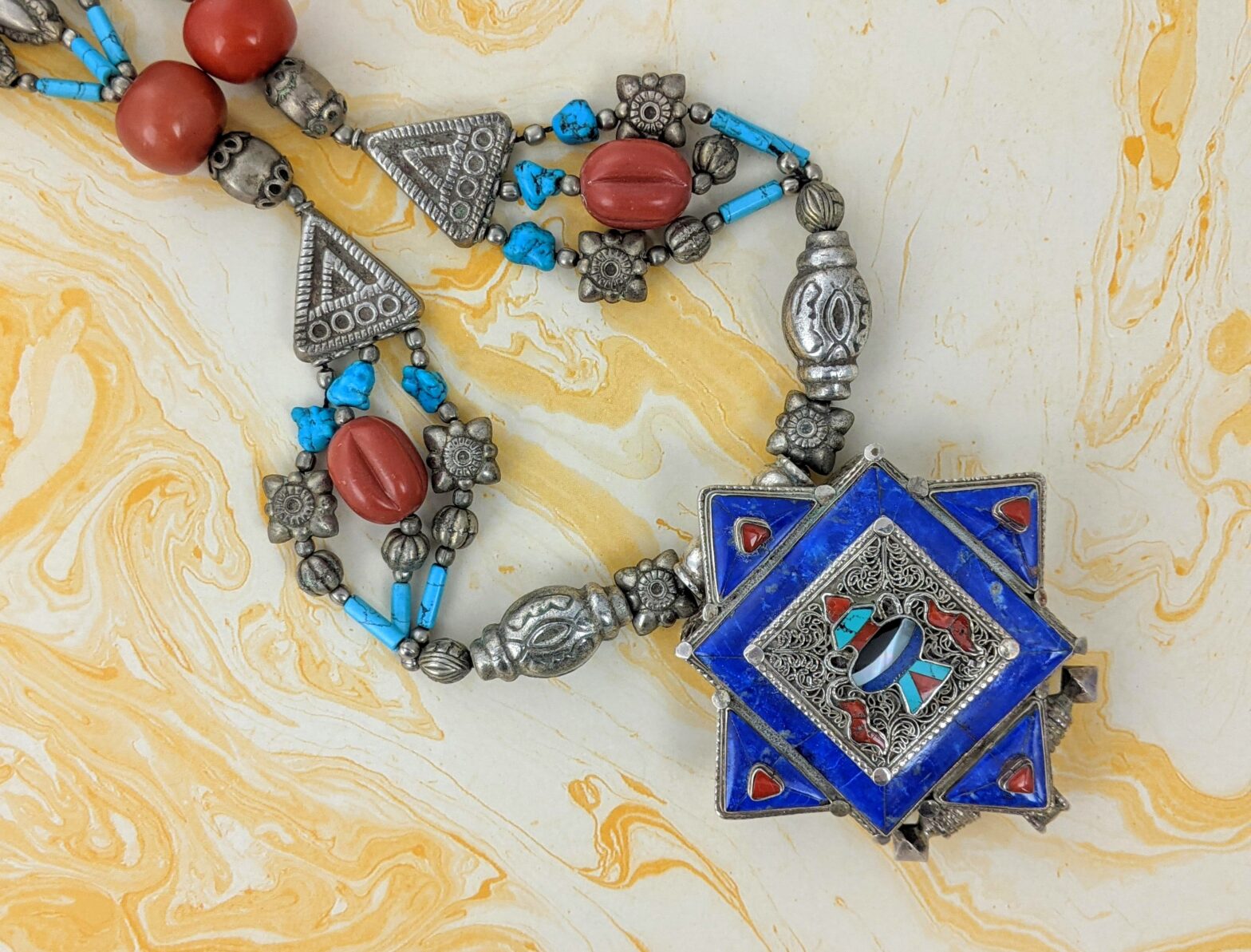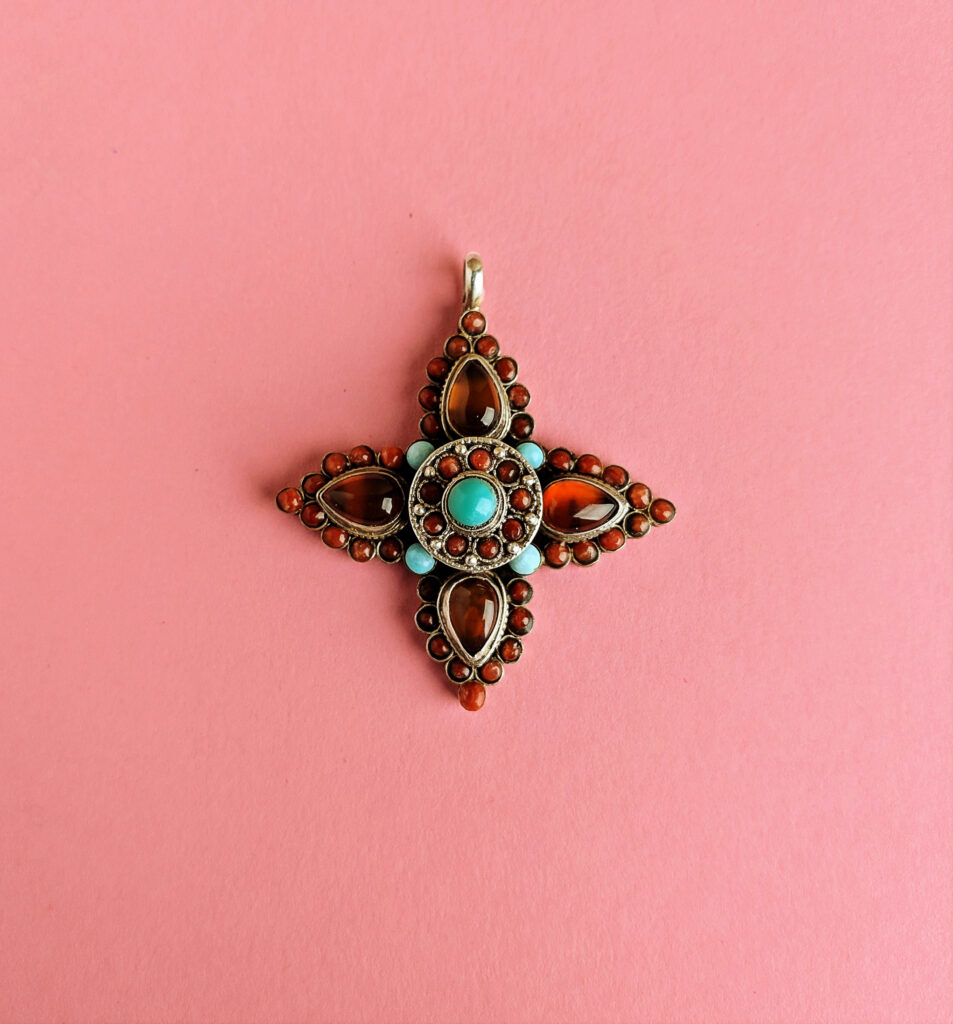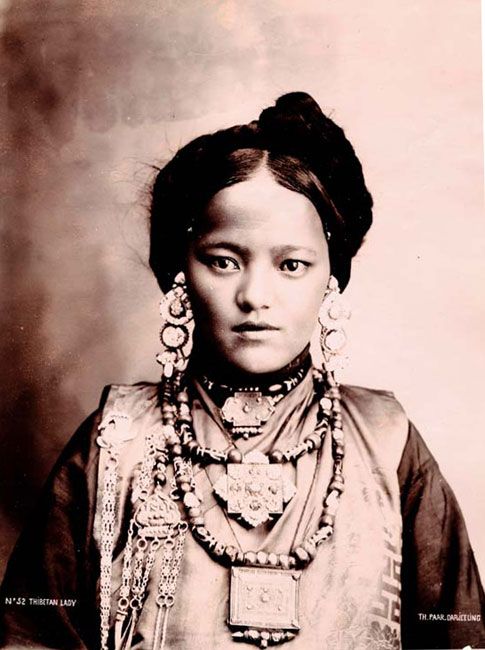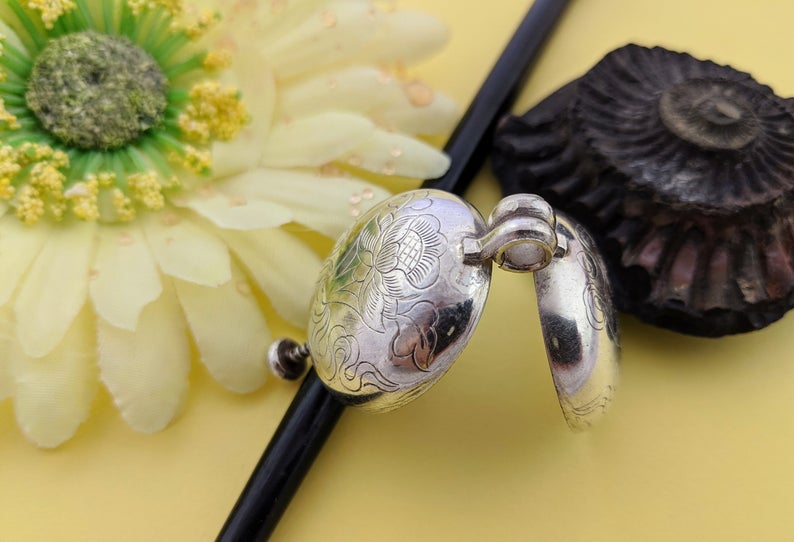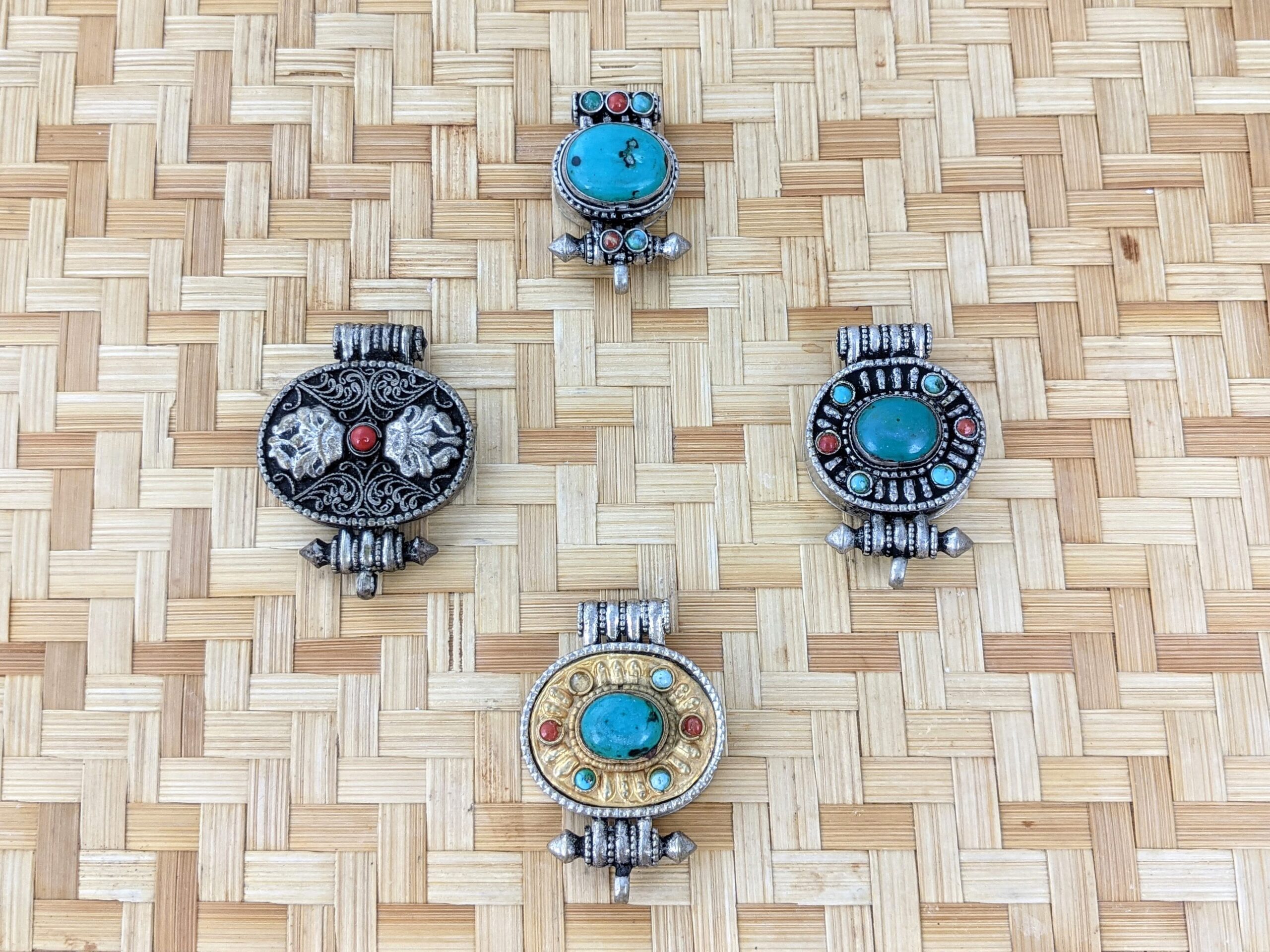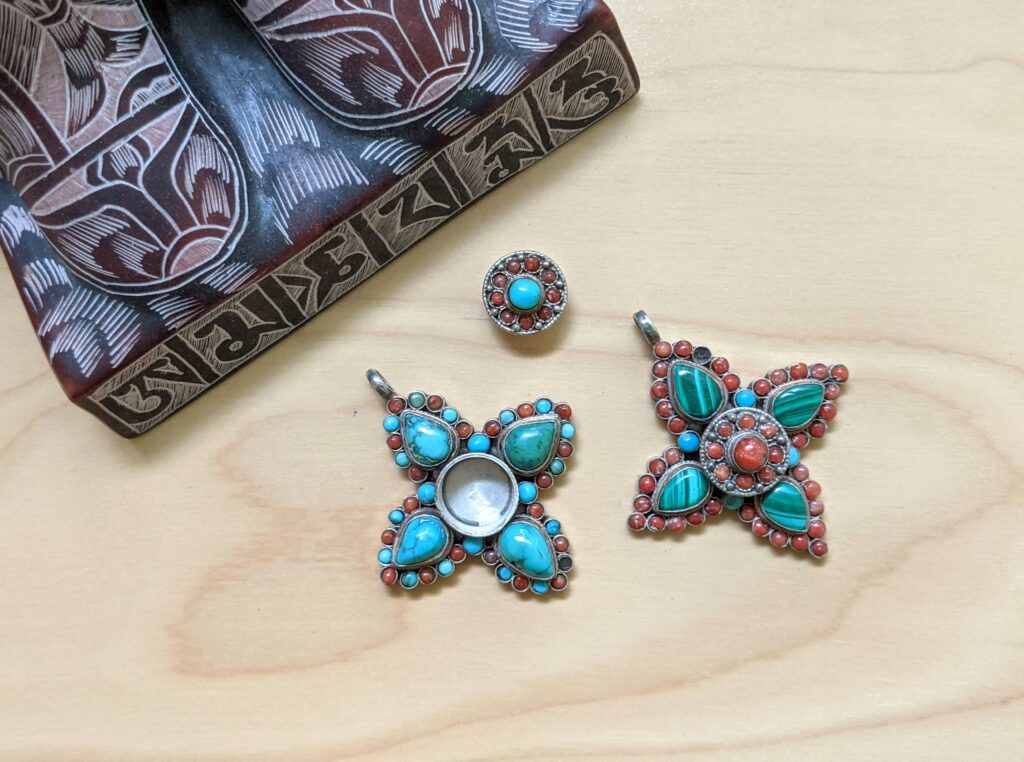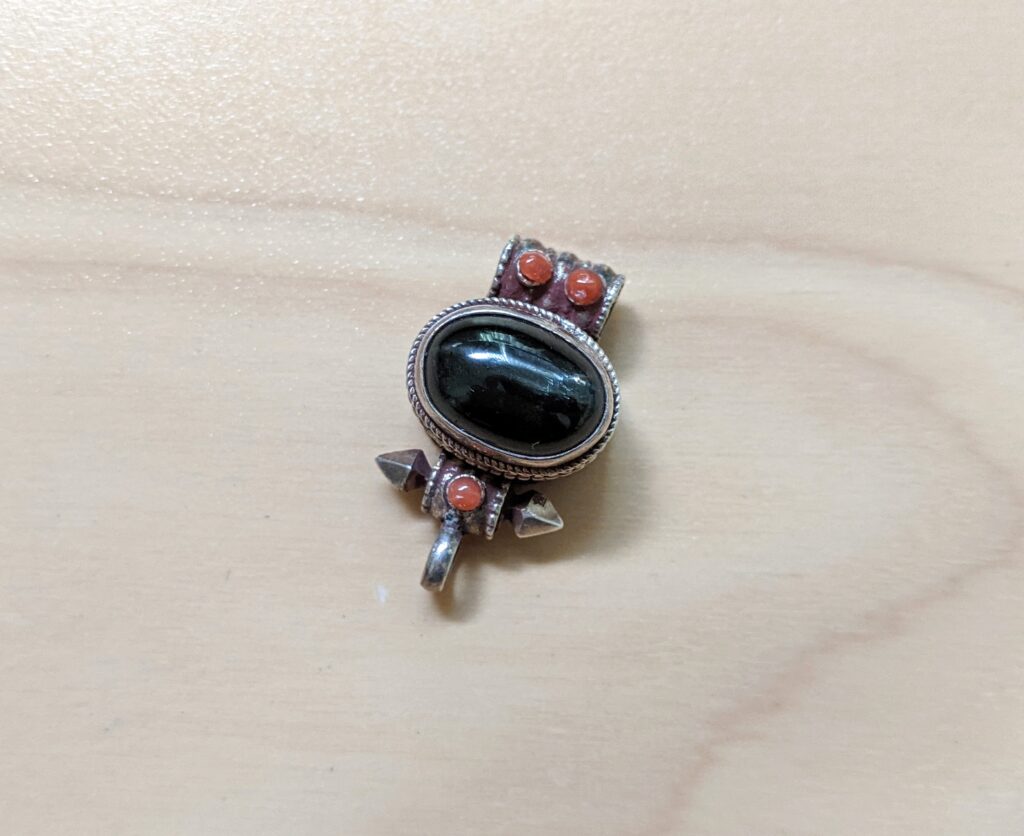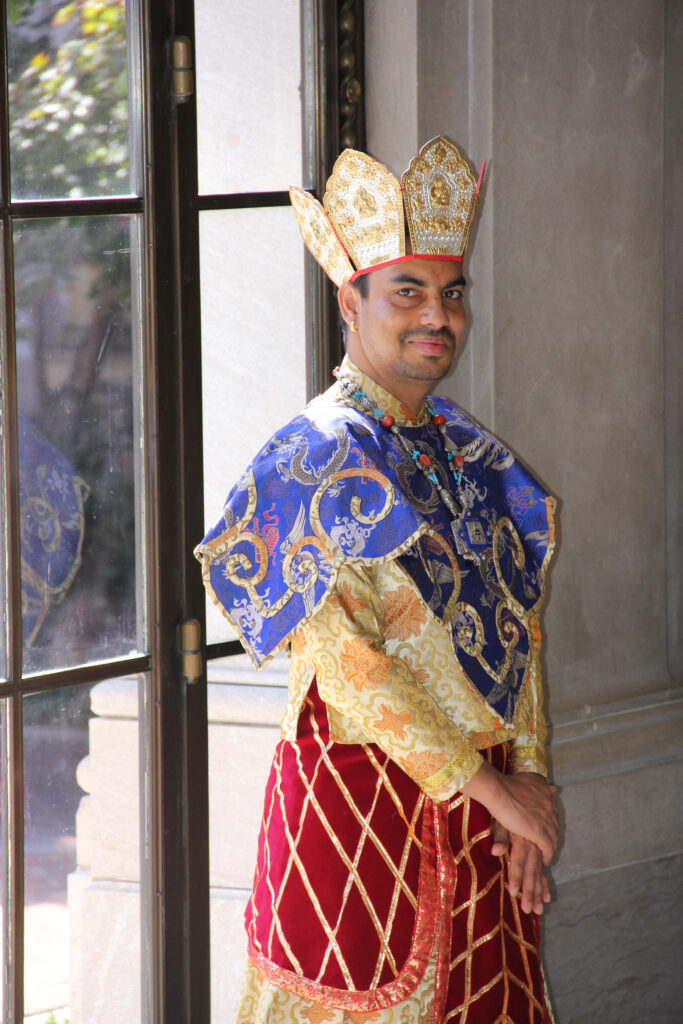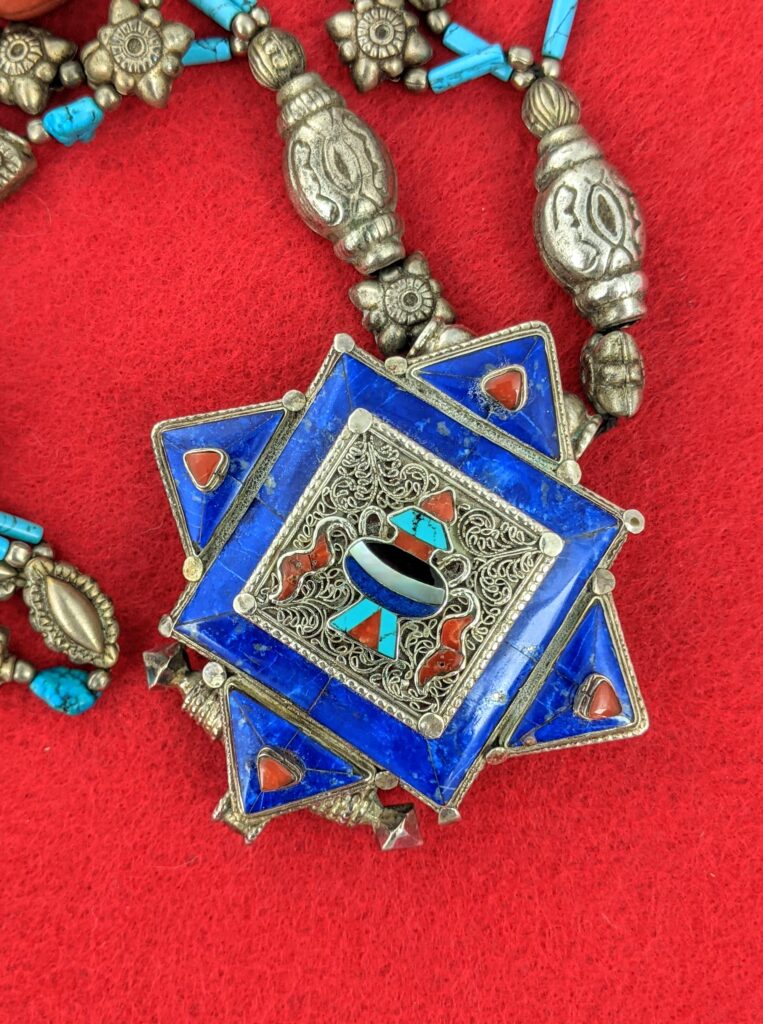Vintage Himalayan jewelry is in a class by itself. It has flourished in land-locked societies, in middle hill villages, on steep and stark plateaus, on the Earth’s highest peaks, and in green and fertile flatland. It has been traded and bartered, passed down and upcycled.
Craftsmanship skills are passed from generation to generation, but this is rapidly changing in a fast moving tech world. All the more reason to celebrate vintage gau – adornment with a history that spans time, heritage, culture, religion, social class, gender, and individual identity.
Worn for thousands of years, the gau is a unique form of amuletic jewelry. Called gau by Tibetan Buddhists and jantar by Nepalis, these amulet boxes are perhaps the ultimate portable sacred space of the Himalayas. They are usually worn around the neck by women and men alike, but in their larger form can also be fastened to a belt. The secret compartment may be in the shape of a square, rectangle or circle.
The purpose of both a gau and a jantar is the same, namely to protect the wearer against evil, misfortune, and actual physical disaster (including encounters with tigers and landslides!)
Though a gau is not gender-rooted, women have always been the primary carriers of amuletic ornamented decoration. This is because they are considered most in need of potent quantities of protective energies, both for themselves as carriers of future generations, and against demonic spirits, curses, and maladies of every kind.
Jewelry for Nepali and Tibetan women is not about ‘new’ or ‘original’ designs as in the West. It is more a matter of custom and continuity, the participation of an individual’s needs within that of the greater society at large. In every area of the Himalayas expressions of delight are immediately voiced when a woman is wearing traditional jewelry. You will hear, “Dherai raamro chha!” (“So beautiful!) in Nepal and see genuine smiles. Wearing colorful and artistically executed jewelry according to custom is auspicious, draws goodness to oneself, honors the gods, and invites fortune and happiness to those around us as well.
In it’s reliquary function, a gau serves as a mini-altar for Buddhists. It is often filled with small deity images, statues, and scripts written by a lama, jhankri, or shaman for prosperity, wellness, attraction, and protection. A gau might also contain herbs, ceremonial grains of rice mixed with sindoor powder, or Tibetan medicinal pills to heal an individual or prevent further illness. It is a powerful talisman that brings a diverse range of magic potency to the wearer. For Buddhists, the gau may be seen as transformative and having sacred power, giving people a sense of participation in their fate.
A gau can be fashioned from a variety of materials: brass, copper, sterling silver – even iron, which has a very particular protective quality for the wearer due to its extremely hard nature. The box might also be made of mixed metal, and ornamented with gold plating.
Gau shapes can include the mandala, an oval, or they can be round, rectangular or trapezoid. Tibetan mandalas represent the universe with all cardinal and intermediate points and are used as a focus for meditation. These pendants often have representations of the eight auspicious symbols of Buddhism, also known as the ashtamangala on the gau face. Nepali jantars are frequently rectangular or lozenge-shaped and are mostly decorated with Hindu representations of Ganesh or another god.
Turquoise and coral are perhaps the most common stones used to embellish these amulet boxes. Turquoise, when gifted, absolves the wearer of all sins, and coral ensures vitality, power, strength, and health. Lapis lazuli, tourmaline, pearls, and even diamonds and rubies can be seen on superior quality gau pendants.
To reveal the amulet’s hidden compartment one need only gently remove the back plate, which is crafted to fit securely. Some gau, however, have the chamber on the face of the pendant as part of a raised setting of stones, representing a Tibetan stupa. Others use a simple screw to secure the gau.
A gau is best worn over the heart, suspended by a string of beads, or threaded through a piece of cloth which has special significance for the wearer. Gau sizes range from tiny versions for children to a size suitable for a traveling altar. They may also have a symbolic vajra (or thunderbolt) at the base, representing firmness of spirit and spiritual power. When not in use, the gau is wrapped in precious cloth and placed in a special box or elaborately worked small chest.
In following the path of dharma traditions and keeping with custom, I also wear a gau in everyday life and for our Utpalalsia cultural performances. I designed the necklace by which the vintage lapis lazuli pendant is suspended with turquoise, sterling silver beads and traditional Tibetan spacers. Given to me by my mother, this gau truly signifies an intimate and portable sacred space filled with objects of great import and protection to me.
I wear it when appropriate and then pass it to my husband when he is performing Buddhist charya dance. In this way we share the auspiciousness and potency of the mandala and its transformative energy together.
Cordula Sturm Dahal

